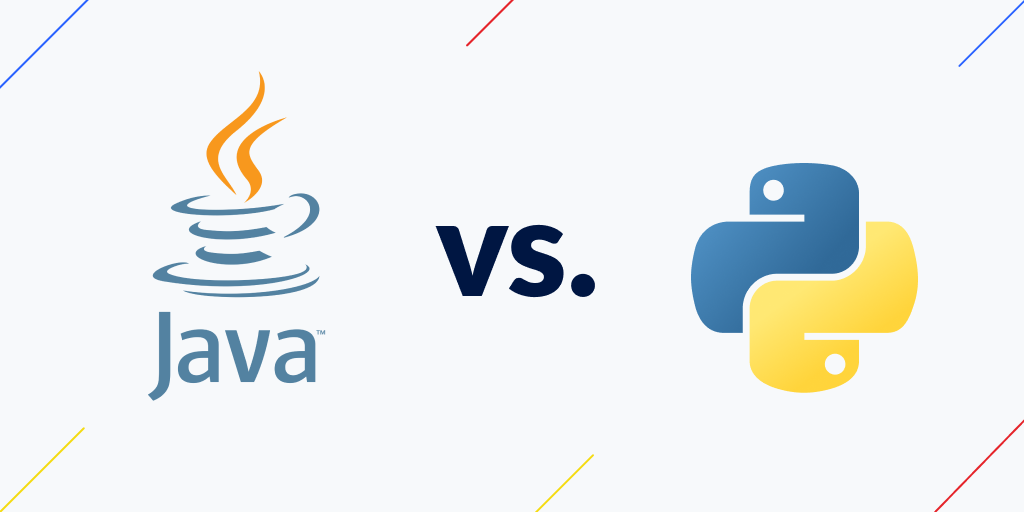Choosing Java vs Python often depends on your project’s needs, performance requirements, and developer expertise. While both are powerful, versatile programming languages, they differ significantly in syntax, execution speed, and use cases. Here’s a detailed breakdown focusing on Python’s advantages over Java and how they compare in speed and performance.
Table of Contents

1. Python Benefits Over Java
Python offers several advantages that make it a popular choice among developers, especially for specific use cases like data analysis, machine learning, and rapid application development:
- Ease of Learning and Use
Python’s simple syntax and readability make it beginner-friendly, enabling faster onboarding for new programmers compared to Java’s verbose and rigid structure.
Example: A “Hello World” program in Python requires just one line:
Python
print(“Hello, World!”)
Whereas Java requires more boilerplate code:
java
public class Main {
public static void main(String[] args) {
System.out.println(“Hello, World!”);
}
}
- Faster Development
Python’s concise code structure and dynamic typing allow developers to write applications quickly, making it ideal for startups or prototyping. - Extensive Libraries for Specialized Applications
Python boasts a vast ecosystem of libraries like Pandas, NumPy, and TensorFlow, making it a preferred choice for data science, AI, and machine learning projects. - Platform Independence
Python’s interpreted nature ensures cross-platform compatibility without needing recompilation, while Java often requires tweaks to the Java Virtual Machine (JVM). - Community and Versatility
Python has a massive, active community that contributes to its extensive documentation and resource pool, making problem-solving faster and easier.
2. Speed of Java vs Python
When it comes to execution speed, Java typically outperforms Python, but context matters:
- Why Java is Faster in Execution
- Compiled vs. Interpreted: Java is a compiled language that runs on the JVM, which optimizes bytecode before execution. Python, being interpreted, processes code line by line, adding overhead.
- Static Typing: Java’s static typing enables better performance during execution, as variable types are explicitly defined and optimized.
- Why Python’s Speed May Suffice
- For applications like machine learning or web development, where processing power is offloaded to external libraries (often written in C/C++), Python’s speed is adequate.
- Python’s dynamic nature trades execution speed for development speed, making it suitable for scenarios where rapid iteration is more critical than raw performance.
3. Java vs Python Performance
Performance considerations go beyond raw speed and encompass scalability, reliability, and use case alignment.
- Java’s Strengths in Performance
- High Throughput: Java excels in large-scale, multi-threaded applications like enterprise systems and Android app development.
- Garbage Collection: Java’s automatic memory management is optimized for long-running applications, ensuring better performance over time.
- Better for High-Performance Systems: Applications requiring high computational power (e.g., financial systems or high-frequency trading platforms) often rely on Java.
- Python’s Pragmatic Performance
- Ideal for Lightweight Applications: Python is well-suited for web applications, scripting, and automation, where speed is not the primary concern.
- Rapid Prototyping: Developers can quickly build, test, and iterate applications in Python, providing an advantage in fast-paced environments.
4. Python vs Java Speed in Practical Applications
- Web Development
- Python: Frameworks like Django and Flask enable fast and flexible web application development.
- Java: Java EE and Spring are robust but have steeper learning curves and require more time to set up.
- Data Science and Machine Learning
- Python dominates due to libraries like NumPy, Scikit-learn, and TensorFlow, offering unparalleled tools for handling data and training models.
- Java’s presence is limited in these fields, though libraries like Weka and Deeplearning4j exist.
- Enterprise and Mobile Applications
- Java’s speed, reliability, and multi-threading capabilities make it the go-to choice for enterprise-level software and Android app development.
- Python is less common in mobile app development due to limited native support.
5. When to Choose Python Over Java
Python is the right choice if your project requires:
- Fast Development Cycles: Startups, prototypes, or projects with tight deadlines.
- Data Science or Machine Learning: Python’s ecosystem is unmatched in these domains.
- Automation and Scripting: Its simplicity and vast libraries make Python ideal for automating repetitive tasks.
6. When to Choose Java Over Python
Java is more suitable for:
- Enterprise Applications: Large-scale, secure, and high-performance applications.
- Mobile Development: Android apps rely heavily on Java.
- Real-Time Systems: Use cases like banking or healthcare systems, where speed and reliability are critical.
See Mobile Application Development services at Software System.
Conclusion:
Both Java and Python have unique strengths, making them leaders in the programming world.
- Choose Python for flexibility, rapid development, and specialized fields like data science.
- Opt for Java when performance, scalability, and robust multi-threading are essential.
Ultimately, the decision depends on your project’s requirements, the team’s expertise, and long-term scalability goals.
